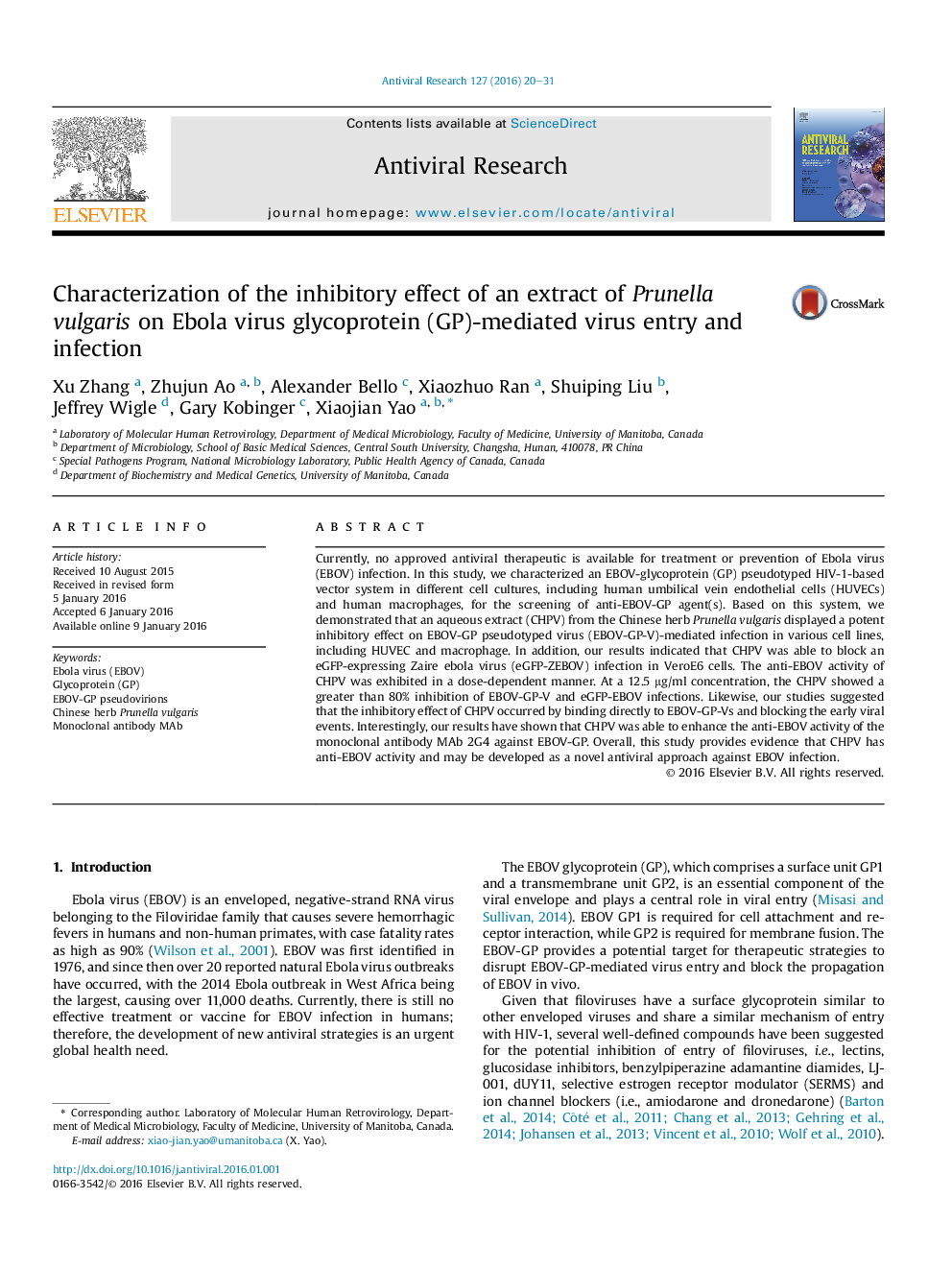| کد مقاله | کد نشریه | سال انتشار | مقاله انگلیسی | نسخه تمام متن |
|---|---|---|---|---|
| 2509802 | 1557816 | 2016 | 12 صفحه PDF | دانلود رایگان |

• We characterized the infection of an EBOV-GP pseudotyped HIV-based vector in human endothelial cells and macrophages.
• We identified an aqueous extract of Prunella vulgaris which displayed a potent inhibition of EBOV-GP mediated viral entry.
• The inhibitory effect of Chinese herb P. vulgaris (CHPV) is through a directly binding to EBOV-GP.
• The presence of CHPV enhances antiviral activity of a monoclonal antibody MAb against EBOV-GP.
• This study provides the evidence that CHPV has potential to be developed as a new anti- EBOV agent.
Currently, no approved antiviral therapeutic is available for treatment or prevention of Ebola virus (EBOV) infection. In this study, we characterized an EBOV-glycoprotein (GP) pseudotyped HIV-1-based vector system in different cell cultures, including human umbilical vein endothelial cells (HUVECs) and human macrophages, for the screening of anti-EBOV-GP agent(s). Based on this system, we demonstrated that an aqueous extract (CHPV) from the Chinese herb Prunella vulgaris displayed a potent inhibitory effect on EBOV-GP pseudotyped virus (EBOV-GP-V)-mediated infection in various cell lines, including HUVEC and macrophage. In addition, our results indicated that CHPV was able to block an eGFP-expressing Zaire ebola virus (eGFP-ZEBOV) infection in VeroE6 cells. The anti-EBOV activity of CHPV was exhibited in a dose-dependent manner. At a 12.5 μg/ml concentration, the CHPV showed a greater than 80% inhibition of EBOV-GP-V and eGFP-EBOV infections. Likewise, our studies suggested that the inhibitory effect of CHPV occurred by binding directly to EBOV-GP-Vs and blocking the early viral events. Interestingly, our results have shown that CHPV was able to enhance the anti-EBOV activity of the monoclonal antibody MAb 2G4 against EBOV-GP. Overall, this study provides evidence that CHPV has anti-EBOV activity and may be developed as a novel antiviral approach against EBOV infection.
Journal: Antiviral Research - Volume 127, March 2016, Pages 20–31